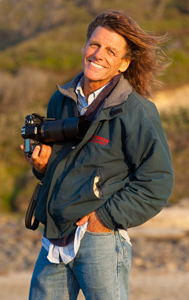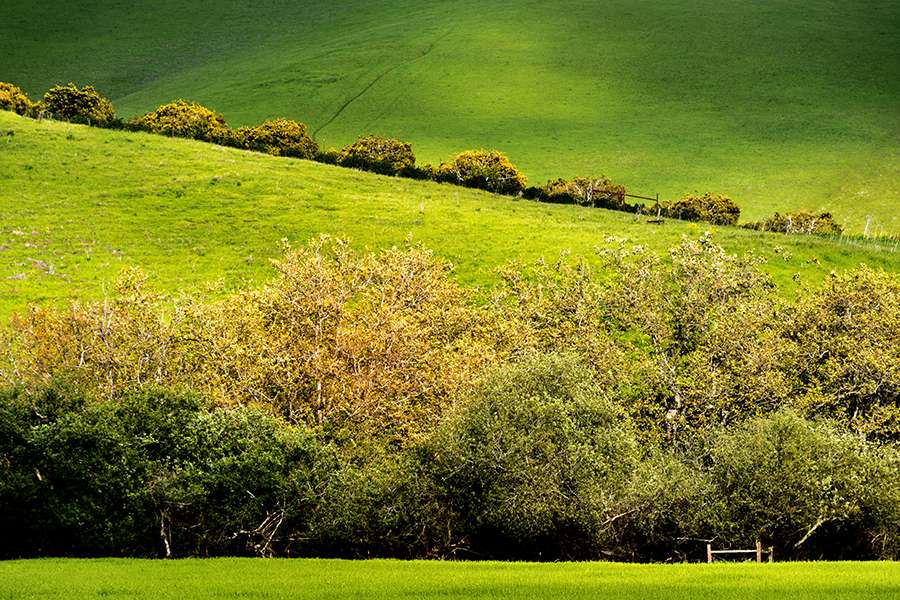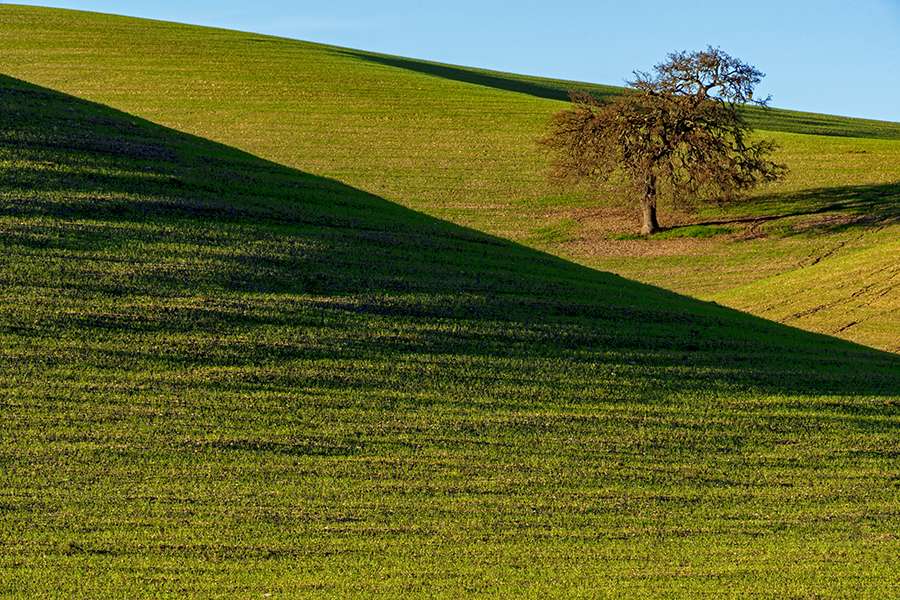
When it comes to photography, compelling composition is everything, and yes, it can be taught! In this interactive online course, Bryan Peterson and Kerry Drager team up for an illuminating visual adventure. Their class is guaranteed to surprise and inspire while also elevating your photography to a higher – “Wow”-impact! – level. Here’s more:
- EVERY successful image is first and foremost about the artful ARRANGEMENT of the content and NOT the content itself. Any subject – even a commonplace or mundane one – has the makings for a winning image, ASSUMING the composition is a strong one.
- Bryan and Kerry both favor a “capture the image in-camera” approach. As a result, their course shows how it’s entirely possible to produce eye-catching images with just a camera and lens … WITHOUT the need for extensive post-processing!
“Understanding Composition: Beyond the Basics” features four jam-packed lessons, each comprised of an easy-to-read text filled with insights, strategies, in-camera shooting techniques and lots of photo examples. How-to videos – short, fun AND to the point – will take you into the field where you can see the creation of eye-catching photography. Not to be overlooked are motivating assignments AND revealing critiques.
Exploring ADVANCED COMPOSITION CONCEPTS, thinking OUTSIDE THE PHOTOGRAPHIC BOX and experimenting with INNOVATIVE DESIGN IDEAS are main course themes designed to unlock your artistic potential. Among the specific topics:
Appreciating beauty in all the “wrong” places; working the scene; discovering the “pictures within the big picture”; pursuing clean backgrounds; framing with a foreground frame; learning to spice up an “empty canvas”; striking a good balance; panning for impressionistic motion; sweating the small stuff; capturing the decisive moment; breaking the rules creatively; etc.
“Understanding Composition: Beyond the Basics” will change the way you look at the world around you. In short, plan on a rewarding experience that will give your photography a creative jolt!

Course Requirements
You’ll need a digital camera with adjustable controls (along with a familiarity of aperture, ISO and shutter speed), and a lens or lenses that extend from wide-angle to telephoto. A tripod and macro capability are encouraged, but NEITHER is required for assignments. Current or past enrollment in the instructors’ other class (“Understanding Composition”) is not necessary for this course. HOWEVER, if you don’t have a good handle on the principles of composition (i.e., rule of thirds), you may wish to start first with “Understanding Composition.”

COURSE OUTLINE
 Lesson 1
Lesson 1
Expanding Your Vision & Seeking the Pictures Within the Picture
So you’ve captured the big picture. Great, but that’s only the beginning! It’s now time to look for intimate scenes, or the “pictures within the picture.” This lesson starts by encouraging you to discover beauty in all the “wrong” places (old cars, scarred sheet metal, broken glass, junk yards, alleyways, fishing ports, etc.). In fact, the photographs that command the most attention often involve commonplace subjects composed in the simplest way. Also: tips on design, depth of field, etc. – concepts that apply to any lens (NOT just macro) and which apply to ALL subjects, mundane or not!

Lesson 2
Pursuing Clean Backgrounds & Sweating the Small Stuff
Here’s another great “rule” of composition: The background is at least as important as the subject itself! Topics: Advice on choosing (and managing!) backgrounds, while avoiding distractions, working with lighting contrast, changing your point of view, switching lens focal lengths, going with a shallow depth of field, etc. Also, we’ll explore why it pays to sweat the small stuff, by adopting a discerning eye for “little” distractions that can have a big impact on a photo. ALSO: How to strike a good balance among key parts of the composition.
Lesson 3
 Mastering the Empty Canvas & Framing with a Frame
Mastering the Empty Canvas & Framing with a Frame
Broaden your view with two more concepts! 1) Seeing the empty or blank canvas and then spicing up things by positioning a person or object against a wall; or by placing a flower, feather, etc., on grass, tile, wood or other surface; by shooting photogenic subjects against a sunset sky. 2): Framing with foreground “frames”: Add visual appeal by framing a background subject with foreground tree branches, large boulders, architectural features, fences, tall grasses, blooming flowers, etc. ALSO: Panning for a soft-motion effect that leads to impressionistic-like images.
Lesson 4
 Working the Scene & Capturing the Decisive Moment
Working the Scene & Capturing the Decisive Moment
Don’t stop at the first picture! Effective composition often involves working, or chipping away at, a scene. Accomplish this by changing your point of view, trying another lens, switching to a vertical format, or adding another element to the mix. Plus, at times, this means capturing the decisive moment, such as Henri Cartier-Bresson’s famed image of a man with an umbrella jumping over a mud puddle. ALSO: Developing personal projects, or using self-assignments to boost your skills, energize your passion and flex your artistic muscles.

Instructor: Kerry Drager

Kerry Drager is an outdoor photographer who is known for his friendly teaching style coupled with constructive encouragement and solid advice. He is the author of Scenic Photography 101, and the co-author of the BetterPhoto Guide to Creative Digital Photography and the BetterPhoto Guide to Photographing Light.
“I’m really honored to be working with Bryan,” says Kerry. “His school is an amazingly creative and supportive environment. And BPSOP is a perfect fit for me, since I enjoy the interactive online-class experience and love helping students from throughout the world achieve their goals.”
In addition to his how-to books, Kerry has co-authored two photo-essay books, and has been published in many magazines, calendars, greeting cards, etc. He has also been profiled in Outdoor Photographer and Shutterbug magazines.
Kerry works mostly with natural light and in-camera techniques. He lives on California’s Central Coast with his wife, Mary, their two Newfoundland dogs and one cat.
To learn more about Kerry, go to www.kerrydrager.com
What are Kerry’s students saying about him & his courses?
Instructor: Bryan Peterson
 Bryan has been a photographer for over 30 years and teaching photography for 20 years. He brings a unique teaching style to the school which will guarantee creative and fun learning by all photographers while elevating them to new photographic heights that they only have dreamed of. In addition, Bryan is the author of such best selling books as Understanding Flash Photography, Understanding Exposure, Understanding Shutter Speed, Beyond Portraiture: Creative People Photography, and Learning to See Creatively.
Bryan has been a photographer for over 30 years and teaching photography for 20 years. He brings a unique teaching style to the school which will guarantee creative and fun learning by all photographers while elevating them to new photographic heights that they only have dreamed of. In addition, Bryan is the author of such best selling books as Understanding Flash Photography, Understanding Exposure, Understanding Shutter Speed, Beyond Portraiture: Creative People Photography, and Learning to See Creatively.
What students are saying about Bryan Peterson and his online courses?

TESTIMONIALS
Thank you for a fantastic course! Your instruction was inspiring, and your critiques of my images really helped me start to see the details in my compositions, and to work harder at perfecting each photo. Thanks again for a great class, I enjoyed it very much!
–Daryl Simon
Thank you for this course! All your critiques have been very helpful for me. Thanks for answering my questions and for your kind words. All that meant a lot to me, and it has been a real pleasure to participate in this class!
–Barbara Michalowska
Kerry, your composition class has been fantastic! It was just what I needed to get me out of my photographic funk. Your written lessons with fabulous photos and Bryan’s videos were excellent. I found your critiques of my own and other students’ work extremely valuable. Thanks for being such a great teacher!
–Sue Moran Thole
Thanks for all the great feedback. I thoroughly enjoyed the class and appreciate all of your guidance!
–Glenn Massarotti
I thoroughly enjoyed your course, which added much to my photographic education! You are an excellent teacher — combining knowledge, fantastic examples, and very skillful critiques. Best wishes to you for continued success!
–Jay Salzman
Thank you very much for such a wonderful and challenging course on composition. You are a Triple A instructor! The lessons, assignments and critiques really boosted my creativity, and I learned about my flaws and my strengths. Kerry, you were always readily available even though we are miles apart, in different time zones. I also enjoyed the company of other course participants and the interactions we developed. Understanding Composition: Beyond the Basics helped me reach a new level. Thank you!
–Jacques Fleury
Thank you, Kerry, for a really good class! Your perceptive (yet gentle) critiques have really helped. I’m hopefully now sweating the small stuff better! And thanks to my fellow students for sharing some great pics and also sharing their learning opportunities with the rest of us.
–Karen P.
Let me say how much I have enjoyed your two “Understanding Composition” courses! I took the first class in January and have just finished the “Beyond the Basics” class. I learned so very much!
–Jane Ross
Thank you for a wonderful class. I look forward to using my new skills!
–Patty T.















